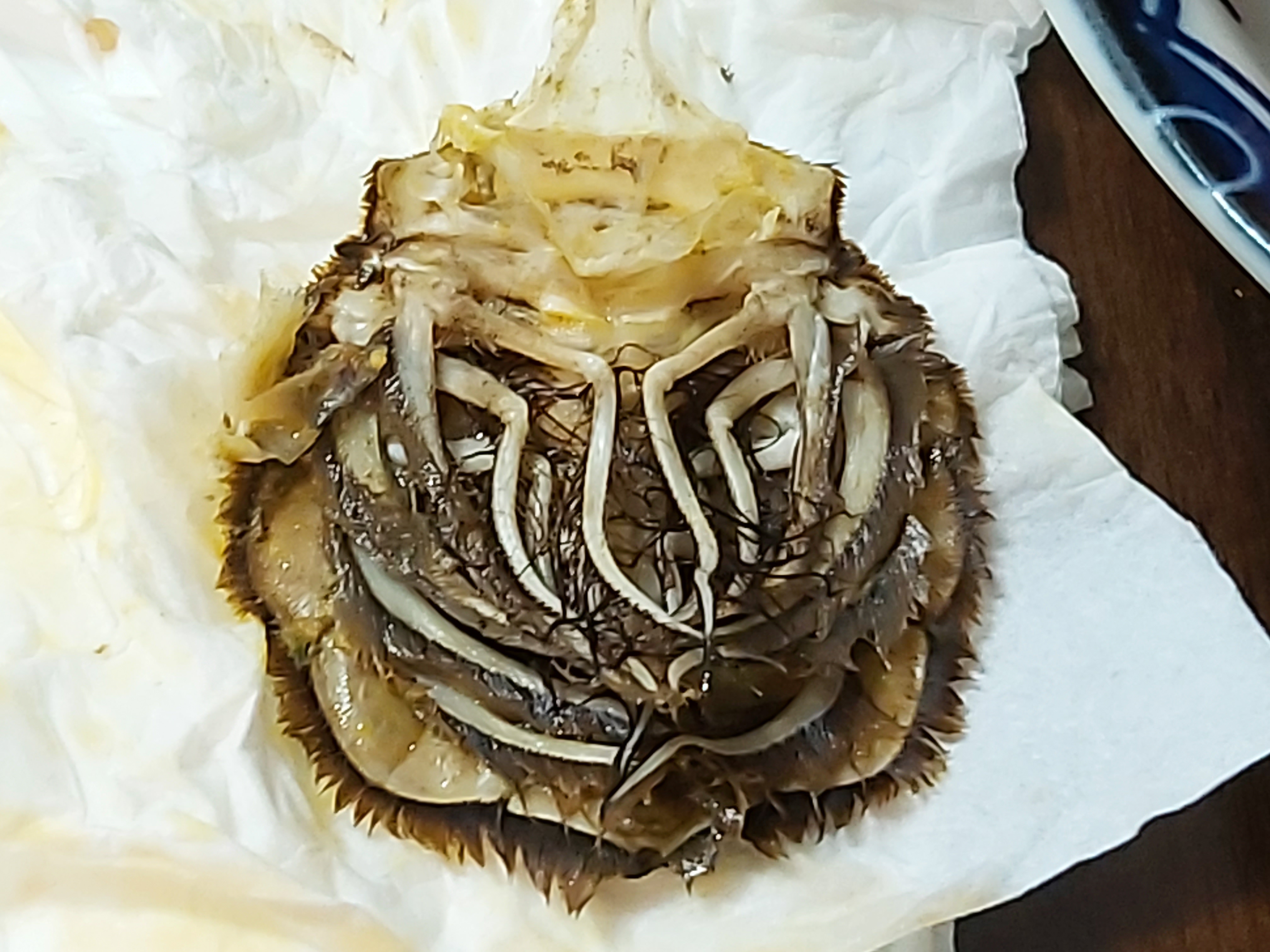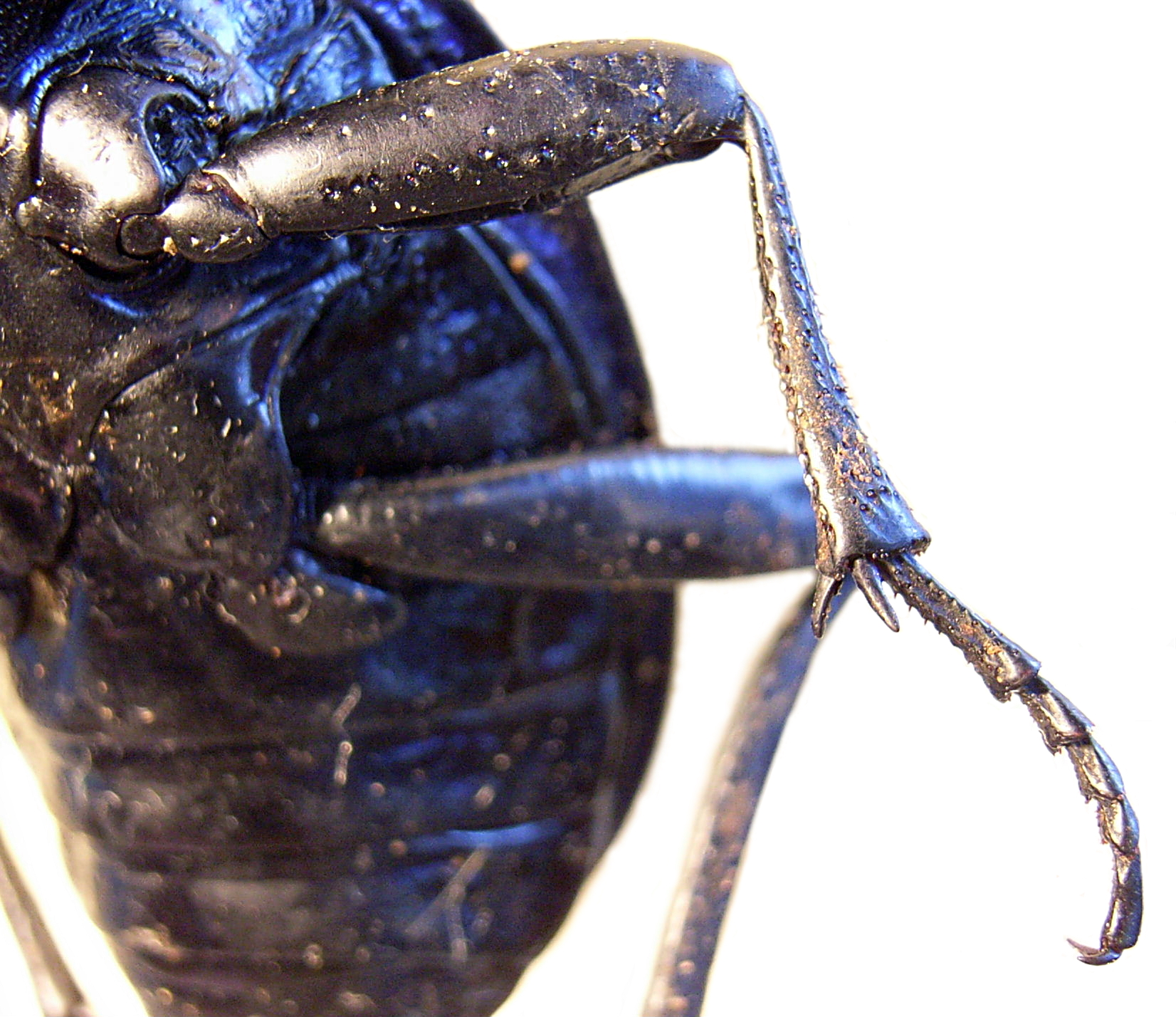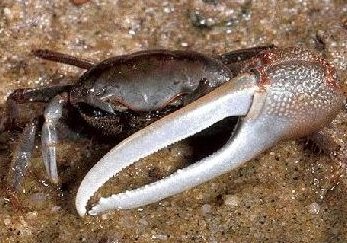|
Paratya Curvirostris
''Paratya curvirostris'' is a species of freshwater shrimp in the family Atyidae. It is endemic to New Zealand, where it is distributed from North Island to Stewart Island, and including the Chatham Islands. It is the only true decapod shrimp to inhabit freshwater in New Zealand.De Grave, S., Page, T. & Ayhong, S. 2013''Paratya curvirostris''.The IUCN Red List of Threatened Species 2013. Downloaded on 14 June 2016. Description ''Paratya'' is distinguished from all other decapod shrimps by the specialized form of the first two pairs of chelipeds, which possess clusters of brushing setae or small hairs to pick up food. This shrimp feeds mainly by scraping detritus from the leaves of aquatic plants (''Elodea spp.'' and milfoils), sometimes with all four chelipeds, bringing the organic material to the mouthparts where larger particles are shredded by the third pair of maxillipeds. It also eats small invertebrates such as midges. Adults grow up to 25mm in length. Sex can be id ... [...More Info...] [...Related Items...] OR: [Wikipedia] [Google] [Baidu] |
Camill Heller
Camill Heller (26 September 1823 – 25 February 1917) was a zoologist and anatomist. Heller was born in Sobochleben ( Soběchleby) near Teplitz in Bohemia (now Teplice, part of the Czech Republic). He received a doctorate in medical studies in Vienna in 1849. Heller was the 'Professor of Zoology and Comparative Anatomy' at the University of Krakow in Poland from 1858 to 1863 and from 1863 until his retirement in 1894 he taught at the University of Innsbruck in Austria. Heller primarily specialised in crustaceans but also worked on bryozoans, echinoderms, pycnogonids, and tunicate A tunicate is a marine invertebrate animal, a member of the subphylum Tunicata (). It is part of the Chordata, a phylum which includes all animals with dorsal nerve cords and notochords (including vertebrates). The subphylum was at one time ca ...s. References 1823 births 1917 deaths University of Vienna alumni Jagiellonian University faculty Academics of the University of Innsbruck Au ... [...More Info...] [...Related Items...] OR: [Wikipedia] [Google] [Baidu] |
Elodea
''Elodea'' is a genus of 6 species of aquatic plants often called the waterweeds described as a genus in 1803. Classified in the frog’s-bit family (Hydrocharitaceae), ''Elodea'' is native to the Americas and is also widely used as aquarium vegetation and laboratory demonstrations of cellular activities. It lives in fresh water. An older name for this genus is ''Anacharis'', which serves as a common name in North America. The introduction of some species of ''Elodea'' into waterways in parts of Europe, Australia, Africa, Asia, and New Zealand has created a significant problem and it is now considered a noxious weed in these areas. ''Elodea canadensis'', sometimes called American or Canadian water weed or pond weed, is widely known as the generic water weed. The use of these names causes it to be confused with similar-looking plants, like Brazilian elodea (''Egeria densa'') or hydrilla (''Hydrilla verticillata''). American water weed is an attractive aquarium plant and is a good ... [...More Info...] [...Related Items...] OR: [Wikipedia] [Google] [Baidu] |
Freshwater Crustaceans Of New Zealand
Fresh water or freshwater is any naturally occurring liquid or frozen water containing low concentrations of dissolved salts and other total dissolved solids. Although the term specifically excludes seawater and brackish water, it does include non- salty mineral-rich waters such as chalybeate springs. Fresh water may encompass frozen and meltwater in ice sheets, ice caps, glaciers, snowfields and icebergs, natural precipitations such as rainfall, snowfall, hail/ sleet and graupel, and surface runoffs that form inland bodies of water such as wetlands, ponds, lakes, rivers, streams, as well as groundwater contained in aquifers, subterranea (geography), subterranean subterranean river, rivers and underground lake, lakes. Fresh water is the Water resources, water resource that is of the most and immediate use to humans. Water is critical to the survival of all living organisms. Many organisms can thrive on salt water, but the great majority of higher plants and most inse ... [...More Info...] [...Related Items...] OR: [Wikipedia] [Google] [Baidu] |
Endemic Fauna Of New Zealand
Endemism is the state of a species being found in a single defined geographic location, such as an island, state, nation, country or other defined zone; organisms that are indigenous to a place are not endemic to it if they are also found elsewhere. For example, the Cape sugarbird is found exclusively in southwestern South Africa and is therefore said to be ''endemic'' to that particular part of the world. An endemic species can be also be referred to as an ''endemism'' or in scientific literature as an ''endemite''. For example '' Cytisus aeolicus'' is an endemite of the Italian flora. '' Adzharia renschi'' was once believed to be an endemite of the Caucasus, but it was later discovered to be a non-indigenous species from South America belonging to a different genus. The extreme opposite of an endemic species is one with a cosmopolitan distribution, having a global or widespread range. A rare alternative term for a species that is endemic is "precinctive", which applies to s ... [...More Info...] [...Related Items...] OR: [Wikipedia] [Google] [Baidu] |
Plankton
Plankton are the diverse collection of organisms found in Hydrosphere, water (or atmosphere, air) that are unable to propel themselves against a Ocean current, current (or wind). The individual organisms constituting plankton are called plankters. In the ocean, they provide a crucial source of food to many small and large aquatic organisms, such as bivalves, fish and whales. Marine plankton include bacteria, archaea, algae, protozoa and drifting or floating animals that inhabit the saltwater of oceans and the brackish waters of estuaries. Freshwater plankton are similar to marine plankton, but are found in the freshwaters of lakes and rivers. Plankton are usually thought of as inhabiting water, but there are also airborne versions, the aeroplankton, that live part of their lives drifting in the atmosphere. These include plant spores, pollen and wind-scattered seeds, as well as microorganisms swept into the air from terrestrial dust storms and oceanic plankton swept into the air ... [...More Info...] [...Related Items...] OR: [Wikipedia] [Google] [Baidu] |
Endopodite
The arthropod leg is a form of jointed appendage of arthropods, usually used for walking. Many of the terms used for arthropod leg segments (called podomeres) are of Latin origin, and may be confused with terms for bones: ''coxa'' (meaning hip, plural ''coxae''), ''trochanter'', ''femur'' (plural ''femora''), ''tibia'' (plural ''tibiae''), ''tarsus'' (plural ''tarsi''), ''ischium'' (plural ''ischia''), ''metatarsus'', ''carpus'', ''dactylus'' (meaning finger), ''patella'' (plural ''patellae''). Homologies of leg segments between groups are difficult to prove and are the source of much argument. Some authors posit up to eleven segments per leg for the most recent common ancestor of extant arthropods but modern arthropods have eight or fewer. It has been argued that the ancestral leg need not have been so complex, and that other events, such as successive loss of function of a ''Hox''-gene, could result in parallel gains of leg segments. In arthropods, each of the leg segments artic ... [...More Info...] [...Related Items...] OR: [Wikipedia] [Google] [Baidu] |
Pleopod
The decapod ( crustaceans such as a crab, lobster, shrimp or prawn) is made up of 20 body segments grouped into two main body parts: the cephalothorax and the pleon (abdomen). Each segment may possess one pair of appendages, although in various groups these may be reduced or missing. They are, from head to tail: Cephalothorax Head # antennules # antennae #mandibles # first maxillae # second maxillae The head also bears the (usually stalked) compound eyes. The distal portion of a mandible or maxilla which has a sensory function is known as a palp. Thorax / pereon #first maxillipeds #second maxillipeds #third maxillipeds #first pereiopods #second pereiopods #third pereiopods #fourth pereiopods #fifth pereiopods Maxillipeds are appendages modified to function as mouthparts. Particularly in the less advanced decapods, these can be very similar to the pereiopods. Pereiopods are primarily walking legs and are also used for gathering food. They are also the ten legs from which decapo ... [...More Info...] [...Related Items...] OR: [Wikipedia] [Google] [Baidu] |
Maxilliped
An appendage (or outgrowth) is an external body part, or natural prolongation, that protrudes from an organism's body. In arthropods, an appendage refers to any of the homologous body parts that may extend from a body segment, including antennae, mouthparts (including mandibles, maxillae and maxillipeds), gills, locomotor legs ( pereiopods for walking, and pleopods for swimming), sexual organs (gonopods), and parts of the tail (uropods). Typically, each body segment carries one pair of appendages. An appendage which is modified to assist in feeding is known as a maxilliped or gnathopod. In vertebrates, an appendage can refer to a locomotor part such as a tail, fins on a fish, limbs (legs, flippers or wings) on a tetrapod; exposed sex organ; defensive parts such as horns and antlers; or sensory organs such as auricles, proboscis ( trunk and snout) and barbels. Appendages may become ''uniramous'', as in insects and centipedes, where each appendage comprises a single ... [...More Info...] [...Related Items...] OR: [Wikipedia] [Google] [Baidu] |
Myriophyllum
''Myriophyllum'' (water milfoil) is a genus of about 69 species of freshwater aquatic plants, with a cosmopolitan distribution. The center of diversity for ''Myriophyllum'' is Australia with 43 recognized species (37 endemic). These submersed aquatic plants are perhaps most commonly recognized for having elongate stems with air canals and whorled leaves that are finely, pinnately divided, but there are many exceptions. For example, the North American species ''M''. ''tenellum'' has alternately arranged scale like leaves, while many Australian species have small alternate or opposite leaves that lack dissection. The plants are usually heterophyllous, leaves above the water are often stiffer and smaller than the submerged leaves on the same plant and can lack dissection. Species can be monoecious or dioecious. In monoecious species plants are hermaphrodite, in dioecious species plants are either male or female, the flowers are small, 4(2)-parted and usually borne in emergent leaf ax ... [...More Info...] [...Related Items...] OR: [Wikipedia] [Google] [Baidu] |
Cheliped
A chela ()also called a claw, nipper, or pinceris a pincer-like organ at the end of certain limbs of some arthropods. The name comes from Ancient Greek , through New Latin '. The plural form is chelae. Legs bearing a chela are called chelipeds. Another name is ''claw'' because most chelae are curved and have a sharp point like a claw. Chelae can be present at the tips of arthropod legs as well as their pedipalps. Chelae are distinct from spider chelicerae in that they do not contain venomous glands and cannot distribute venom. See also * Pincer (biology) * Pincer (tool) Pincers are a hand tool used in many situations where a mechanical advantage is required to pinch, cut or pull an object. Pincers are first-class levers, but differ from pliers in that the concentration of force is either to a point, or to an ... References Arthropod anatomy {{Arthropod-anatomy-stub ... [...More Info...] [...Related Items...] OR: [Wikipedia] [Google] [Baidu] |
Fresh Water
Fresh water or freshwater is any naturally occurring liquid or frozen water containing low concentrations of dissolved salts and other total dissolved solids. Although the term specifically excludes seawater and brackish water, it does include non- salty mineral-rich waters such as chalybeate springs. Fresh water may encompass frozen and meltwater in ice sheets, ice caps, glaciers, snowfields and icebergs, natural precipitations such as rainfall, snowfall, hail/ sleet and graupel, and surface runoffs that form inland bodies of water such as wetlands, ponds, lakes, rivers, streams, as well as groundwater contained in aquifers, subterranean rivers and lakes. Fresh water is the water resource that is of the most and immediate use to humans. Water is critical to the survival of all living organisms. Many organisms can thrive on salt water, but the great majority of higher plants and most insects, amphibians, reptiles, mammals and birds need fresh water to survive. Fresh ... [...More Info...] [...Related Items...] OR: [Wikipedia] [Google] [Baidu] |
Paratya Curvirostris (cropped)
''Paratya curvirostris'' is a species of freshwater shrimp in the family Atyidae. It is endemic to New Zealand, where it is distributed from North Island to Stewart Island, and including the Chatham Islands. It is the only true decapod shrimp to inhabit freshwater in New Zealand.De Grave, S., Page, T. & Ayhong, S. 2013''Paratya curvirostris''.The IUCN Red List of Threatened Species 2013. Downloaded on 14 June 2016. Description ''Paratya'' is distinguished from all other decapod shrimps by the specialized form of the first two pairs of chelipeds, which possess clusters of brushing setae or small hairs to pick up food. This shrimp feeds mainly by scraping detritus from the leaves of aquatic plants (''Elodea spp.'' and milfoils), sometimes with all four chelipeds, bringing the organic material to the mouthparts where larger particles are shredded by the third pair of maxillipeds. It also eats small invertebrates such as midges. Adults grow up to 25mm in length. Sex can be identif ... [...More Info...] [...Related Items...] OR: [Wikipedia] [Google] [Baidu] |
.jpg)
.jpg)





